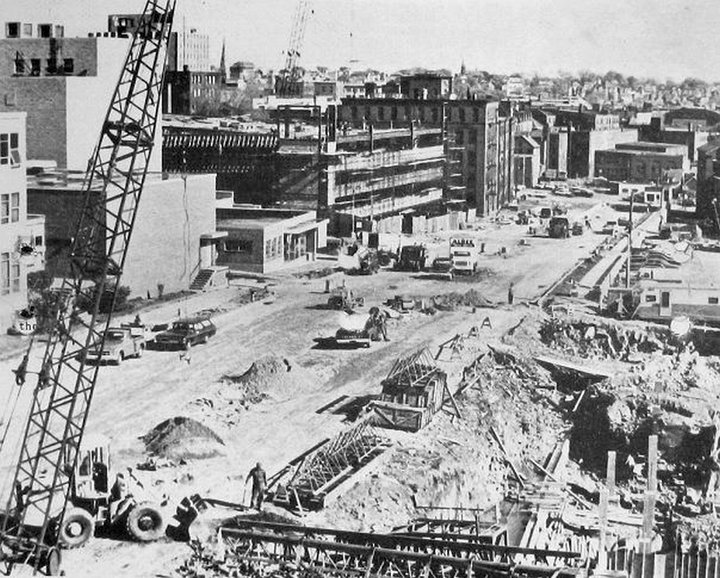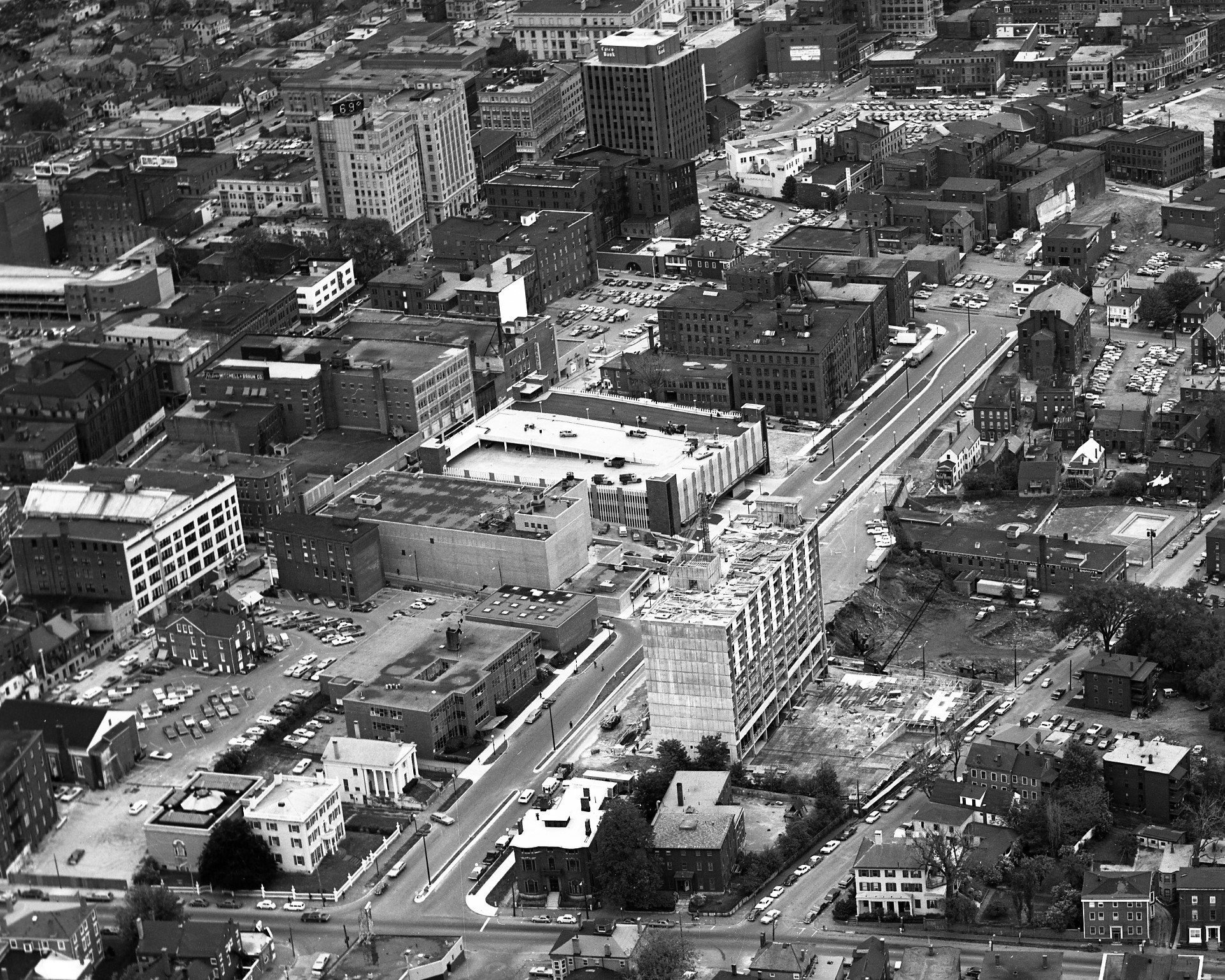Spring Street Houses
Houses between Spring and Oak Streets representing a microcosm of Portland’s domestic architecture landscape just prior to demolition and relocation in 1971. Image courtesy Portland Public Library, Portland Press Herald Still-Film Negatives Collection.
Widening of Spring Street in process, looking east, 1971.
Spring Street, looking east, 1966.The row of houses from the corner of High and Spring Streets east to the parking lot were all lost five years later. Image courtesy Portland Public Library, Portland Press Herald Still-Film Negatives Collection.
After completion of the widening, 1972. Safford House is now on the corner of High and Spring Streets. The street has not yet been extended fully to meet Middle Street, Image courtesy Portland Public Library, Portland Press Herald Still-Film Negatives Collection.
Boasting both commercial and residential buildings Spring Street changed dramatically as part of the larger transportation plan during the city’s urban renewal. Houses of varying styles that represented a microcosm of Portland’s architectural landscape were demolished to make room for the Spring Street arterial in the early 1970s. Today only three houses remain east of High Street—Safford House, which now sits on a corner lot after its neighbor was torn down to widen the street, and the McClellan-Swett and Clapp Houses, both owned by the Portland Museum of Art. One additional building, the John J. Brown House, commonly referred to as the “Gothic House” was saved from destruction when it was relocated from its original foundation at 87 Spring Street to 387 Spring Street thanks to the efforts of Greater Portland Landmarks.
In addition to widening Spring Street, the transportation plan also extended it. As you can see in the images above, Spring Street used to terminate at Center Street. Extending Spring to connect it to Middle Street (it’s current configuration) meant the destruction of numerous commercial buildings. The cropped images from 1966 and 1972 above are courtesy of the Portland Public Library and are available to explore in high resolution.
Seeing the way things were progressing and seeking to save what they could, Greater Portland Landmarks was instrumental in establishing the Spring Street Historic District in 1970. This National Register district which extended from High Street west to Emery Street, was later absorbed into Portland’s West End Historic District.




